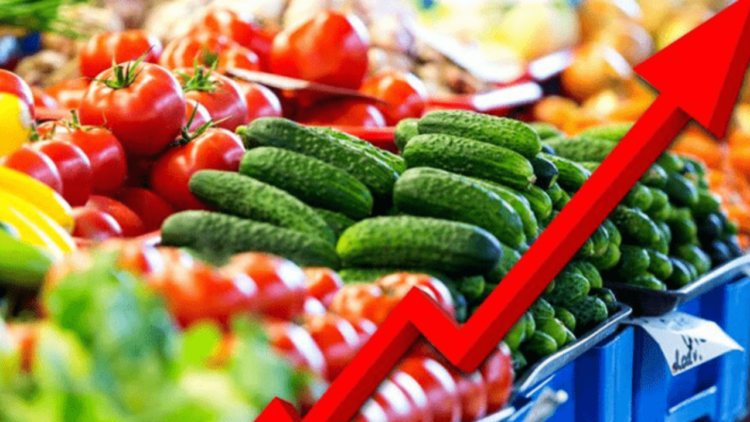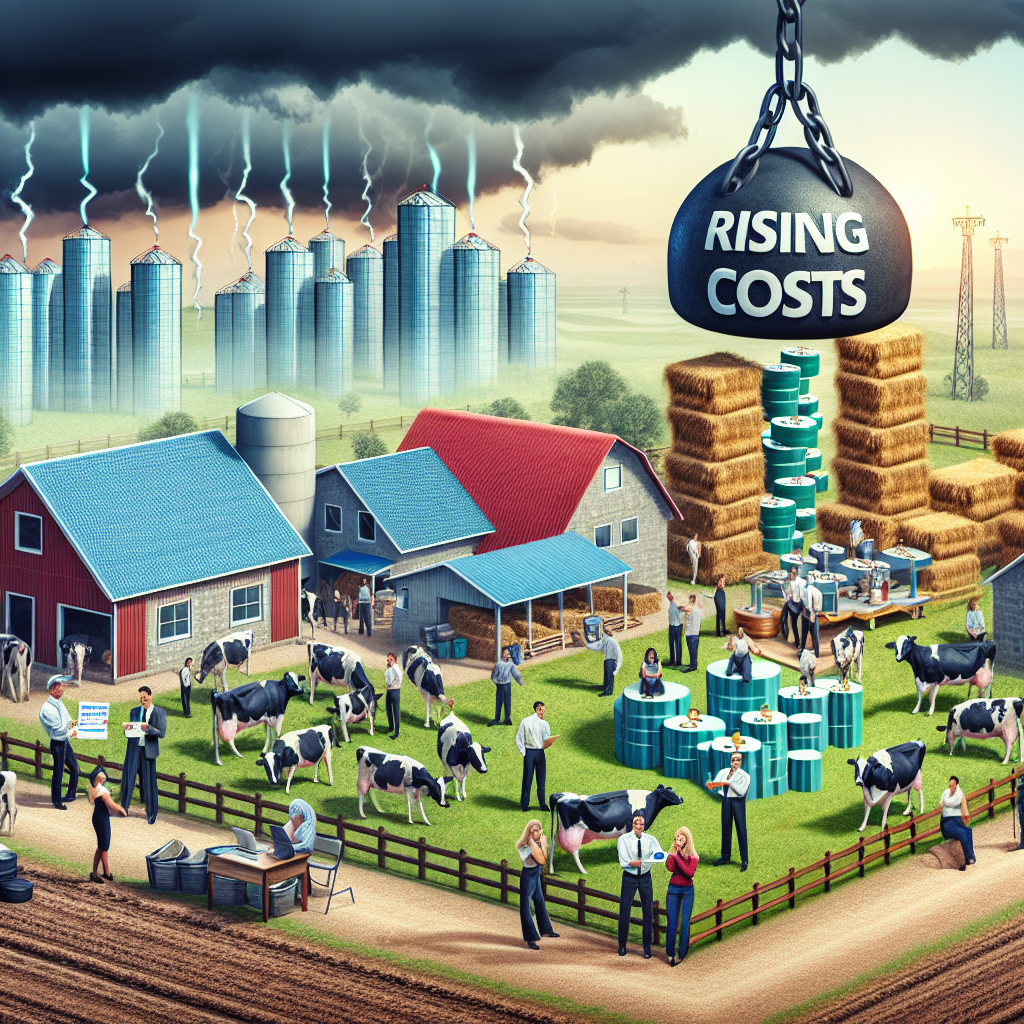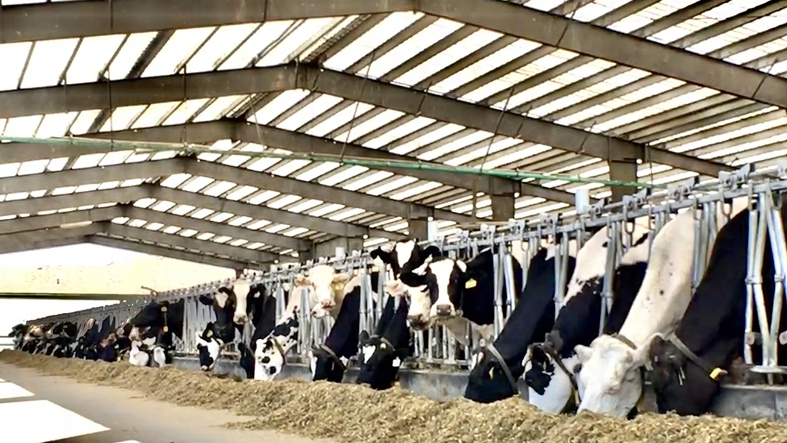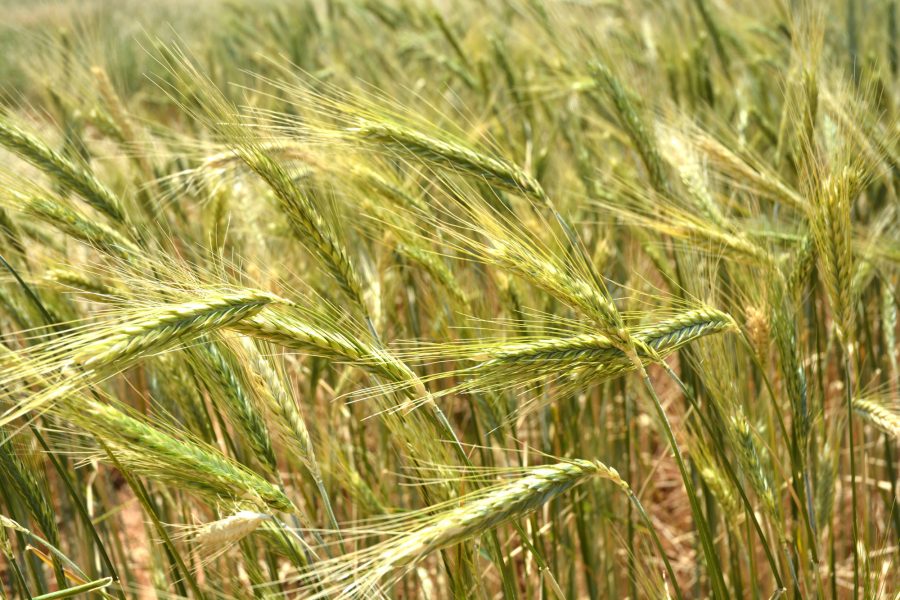Uncover how food inflation affects both dairy farmers and consumers. Are rising costs impacting your finances? Explore strategies to tackle this economic hurdle.
Summary:
As food inflation persists, consumers and industries feel the pressure of rising prices. The U.S. has seen an increase in the Consumer Price Index (CPI), primarily due to essential commodities like dairy products. This surge derives from global supply chain disturbances, compelling dairy farmers and industry professionals to rethink their strategies. “Navigating these challenging times requires foresight and adaptability,” observes industry analyst Jane Doe. She emphasizes the importance of understanding inflation’s effect on every dairy chain link. With feed costs up by 35% and fuel by over 41%, farmers find reinvestment difficult, and rising labor costs add another layer of strain. Prices for dairy staples, such as a gallon of whole milk now costing $4.04, have pushed families towards altering their spending habits. Local producers must grasp these shifts at this junction to remain competitive, especially in the export market.
Key Takeaways:
- Overall inflation in the U.S. rose 2.6% yearly, with food prices increasing by 2.1% from October 2023.
- Food consumed away from home saw a sharper increase compared to food at home, highlighting a trend in consumer spending.
- Despite global inflation moderation, low-income households struggle with increased costs, particularly in the food sector.
- International demands for dairy are stable but strained by limited milk supply growth, keeping prices steady yet elevated.
- The global dairy index reflects a significant year-over-year increase, driven primarily by higher cheese and butter prices.
- Economic uncertainties in developing regions result in cautious spending, impacting dairy consumption patterns.

Imagine strolling through the aisles of your local grocery store only to find that your favorite dairy products are steadily escaping your budgetary reach. This escalating reality isn’t just hitting consumers—it’s also shaking dairy farmers to their core. Rising food inflation, a silent force, tiptoes into the lives of individuals and businesses alike, leaving a noticeable dent. The dairy industry is navigating turbulent waters; input costs are soaring, and consumers feel the pinch. The spiraling costs of essentials, from milk to cheese, pose significant challenges. Dairy farmers grapple with thinning profit margins as feed and fuel costs rise. At the same time, consumers adjust their diets, often reluctantly, as household staples like bread, eggs, and butter prices climb higher. The consequences reverberate through the supply chain, affecting worldwide production, sales, and household decisions.
The Cost Crunch: Navigating Inflation’s Grip on Dairy Farms
Despite the inflationary squeeze, dairy farmers are displaying remarkable resilience. Rising input costs, including feed, fuel, and labor, continue to challenge their profitability margins. Feed costs, a significant expenditure for dairy operations, have surged by approximately 35% over the past year, directly impacting farmers’ bottom lines. Yet, these farmers are not backing down; they are finding innovative ways to manage their businesses despite these challenges.
Fuel, another critical necessity in dairy farming for transport and machinery operation, has also seen a sharp uptick. Supply chain disruptions and geopolitical tensions have increased fuel prices by over 41%. High fuel prices make it more costly for farmers to manage daily operations and distribute their products.
Labor costs, too, present an ongoing challenge. As inflation drives the cost of living higher, wages must follow suit. This necessity places additional financial pressure on farmers grappling with thin profit margins. According to the National Milk Producers Federation, labor shortages and increased wages have markedly strained dairy farm operations.
Industry experts stress the crucial role of support from industry leaders and policymakers in these challenging times. While farmers are adept at navigating such challenges, the current situation demands a collective effort. To maintain sustainability, dairy farmers need a balanced approach that accounts for these escalating costs while ensuring fair pricing of dairy products in the market. This call to action calls for all industry stakeholders to unite and support our dairy farmers.
Milk Money: The True Cost of Rising Dairy Prices
Inflation is tightening its grip on household budgets, particularly for dairy products. For example, the price of a gallon of whole milk has risen by 2.9% to $4.04, a significant jump from the previous year. Imagine this increase spreading to other commonly purchased dairy items, such as cheese, with Cheddar holding steady at $5.84 per pound. While it seems stable at first glance, maintaining this price level can strain resources for families relying on dairy as a dietary staple.
These rising costs translate to difficult choices for many households, especially those with lower incomes. Prioritizing nutritious food could mean cutting back elsewhere or opting for cheaper but less healthy options. Dairy is a critical ingredient in various meals, from breakfast to dinner, so these price hikes aren’t just numbers. Their real-life impacts are forcing a shift in consumption patterns. Families must now meticulously strategize their grocery spending, often weighing the value of nutritional content against affordability.
These realities underscore a broader issue: the trade-offs facing consumers in an inflation-driven economy. As dairy prices inch upward, the repercussions are felt deeply at the dinner table, challenging the balance between maintaining a balanced diet and sticking to a budget. This scenario reminds consumers of how interconnected economic trends are to their everyday lives, creating a ripple effect beyond monetary constraints. It calls for consumers to be aware of these issues and make informed choices.
Riding the Global Dairy Wave: Navigating Complex Market Tides
Amidst these fluctuations, the international dairy scene paints a picture of volatility and pressure. Globally, the Food and Agriculture Organization (FAO) Food Price Index offers a telling snapshot of market dynamics, with its October reading at a significant 24.5% rise compared to the previous year. This uptick highlights a broader trend where international forces exert gravitational pull on local markets, such as surging cheese and butter prices. Countries reliant on imports are at the mercy of these global tides, which ripple through supply chains and ultimately inflate consumer costs.
As markets contend with these shifts, local producers face a critical juncture. Understanding these global rhythm shifts is essential for dairy professionals, especially those targeting export opportunities. The landscape requires agile strategies and informed decision-making, whether adjusting to the demand for powdered dairy or navigating restrictions shaped by economic uncertainty. With limited growth in world milk supplies, even the stalemate of demand versus availability means prices teeter without significant relief. Amidst this complexity, dairy industry stakeholders must stay attuned to these international signals to thrive in an era where global trends increasingly dictate local realities.
Riding the Supply Chain Storm: Dairy Farmers at the Eye of Inflation
Supply chain disruptions continue to play a pivotal role in the spiraling costs of food, significantly impacting dairy farmers. The journey from farm to table is fraught with hurdles, each adding to the mounting pressure on prices. The most glaring issue involves transportation costs. With fuel prices remaining volatile, transportation becomes costly. These additional expenses can quickly chip away at thin profit margins for dairy farmers relying on regular, timely deliveries.
Labor shortages add to the complexity. These aren’t just localized issues—regions across the globe are feeling the strain of not having enough skilled workers. Dairy farms, in particular, require specialized knowledge to maintain animal welfare and product quality. Without adequate staffing, processes slow down, and inefficiencies rise, increasing operational costs.
Additionally, the ripple effect of delayed shipments must be considered. The supply chain suffers when dairy products don’t reach distributors on time. Products risk spoilage, and farms might face penalties or lose contracts. Such disruptions put dairy farmers in a precarious position, balancing higher costs against potential income loss.
These challenges show no signs of abating, making it crucial to develop strategies to mitigate their effects. The agricultural sector must adapt, whether through improved logistics technology, reassessing workforce strategies, or finding alternative energy solutions. Yet, until these changes come to fruition, the dairy industry will remain at the mercy of its supply chain woes, with consumers ultimately paying the price at the store.
Harvesting Opportunities: Diversifying Income Streams for Financial Sustainability
- Embrace Diversification: Dairy farmers can diversify their income streams by exploring alternative products like yogurt, cheese, or organic dairy, which may yield higher profits. Farmers might also consider agritourism or farm-to-table services as additional income sources.
- Energy Efficiency: Investing in energy-efficient technologies like solar panels or energy-saving machinery can lower long-term operational costs. This reduces the electricity bill and serves as a hedge against energy cost inflation.
- Collaborative Buying: Farmers can form co-operatives to purchase feed and equipment in bulk, reducing overall costs through economies of scale. Grouping purchases can also provide access to better financing options or supplier discounts.
- Cost-Effective Dairy Alternatives: Consumers looking to manage their budgets can explore more affordable dairy options, like private-label brands or bulk purchasing. While not always cheaper, plant-based alternatives might provide better financial efficiency when on sale or bought in larger quantities.
- Financial Resilience: Building a robust financial safety net is crucial. Farmers should maintain an emergency fund and explore insurance options to protect against unpredictable market shifts or disasters. This strategy helps cushion the effects of future inflationary periods.
- Invest in Tech: Leveraging technology, such as farm management software, can optimize operations, reducing inefficiencies and waste. Precision agriculture tools allow for better resource allocation and can contribute to maintaining profitability despite inflation.
- Stay Informed: Keeping abreast of market trends and economic forecasts enables proactive adjustments to business strategies. Engaging with industry groups and digital platforms can provide insights and networking opportunities with other professionals facing similar inflationary challenges.
The Bottom Line
In the swirling storm of global inflation, dairy prices have become unpredictable, profitability is challenging, and strategic agility is being demanded. As consumer behavior shifts, influenced by rising domestic and international costs, the dairy industry finds itself at a crossroads.
The question now looming on the horizon is: How can dairy professionals pioneer new paths in this evolving landscape, ensuring survival, growth, and innovation? With fluctuating demands and constrained resources, it might be time to look beyond traditional models.
Consider the opportunities for diversification, embracing sustainable practices, and engaging with cutting-edge technology. How will you navigate through these turbulent times to secure a prosperous future? The decisions made today could redefine the dairy sector for generations to come.
Learn more:
- Post-Covid Grocery Price Surge: How It Affects Dairy Farmers and Your Wallet
- Why Milk Costs More but Dairy Farmers Earn Less: The Global Dairy Dilemma
- Navigating the Waves: Dairy Producers Defy Challenges to Keep Barns Full Amid Soaring Milk Prices and Adverse Conditions
 Join the Revolution!
Join the Revolution!
Bullvine Daily is your essential e-zine for staying ahead in the dairy industry. With over 30,000 subscribers, we bring you the week’s top news, helping you manage tasks efficiently. Stay informed about milk production, tech adoption, and more, so you can concentrate on your dairy operations.







 Join the Revolution!
Join the Revolution!









